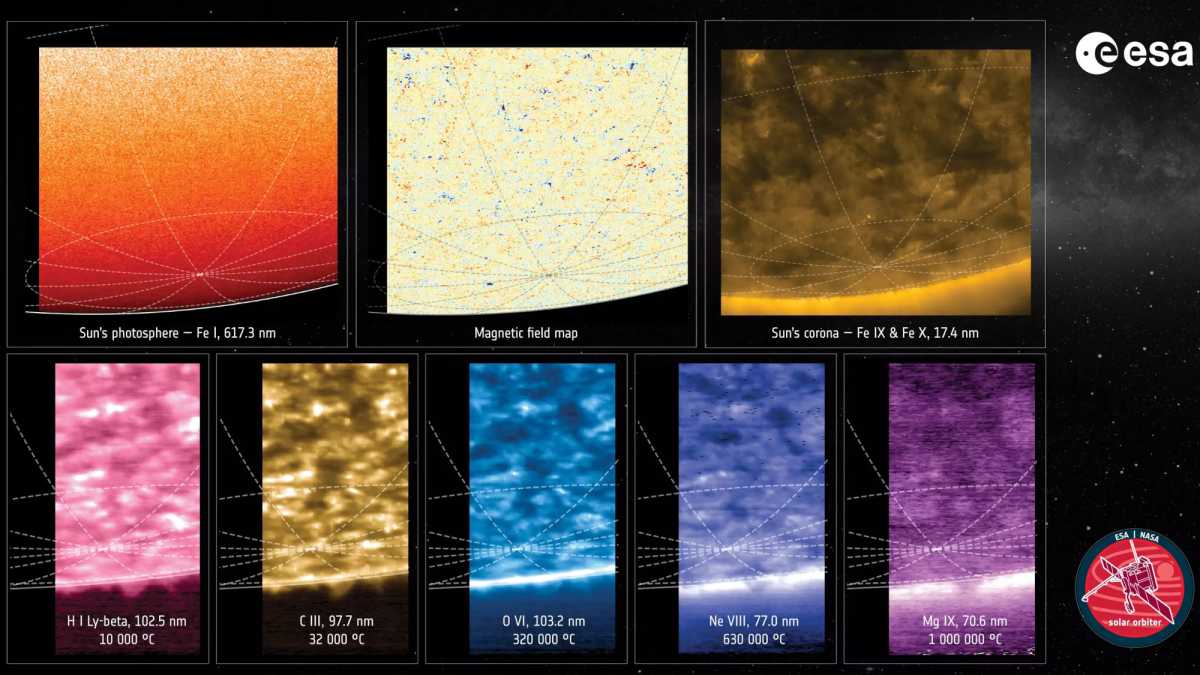On February 10th, 2020, the European Space Agency (ESA) launched the Solar Orbiter space probe from Cape Canaveral, Florida. Over five years later, Solar Orbiter has now delivered photos of the Sun’s south pole for the first time ever. These are the world’s first images of the south pole of our Sun taken by a man-made space probe.
The images were taken on March 16th and 17th of this year, but ESA has only now published them. The poles of the Sun have been largely unexplored until now, and no space probe has ever seen them before, writes the ESA. Solar Orbiter’s trajectory was recently inclined by 17 degrees to the solar equator, allowing brand-new measurements from a unique perspective for the first time.
At the time of the flyby, the probe had a clear view of the south pole and the probe’s viewing angle to the Sun was around 15 degrees below the solar equator. With the Sun currently at solar maximum of its 11-year activity cycle, there was a lot to see during the flyby. ESA puts it this way: “At the south pole, the Sun’s magnetic field is currently a mess. While a normal magnet has a clear north and south pole, the PHI instrument’s magnetic field measurements show that both north and south polarity magnetic fields are present at the Sun’s south pole.”
The sun is very active right now, with violent bursts of radiation and particles. Many dark sunspots (i.e., areas with a particularly strong magnetic field) can be seen on the surface. By observing the poles and the magnetic activity, scientists hope to gain a better understanding of solar activity and the solar cycle.

This collage shows Solar Orbiter’s view of the Sun’s south pole on March 16 and 17, 2025, from an angle of about 15 degrees below the solar equator.
ESA & NASA/Solar Orbiter/PHI, EUI & SPICE Teams
It isn’t possible to see the poles of the Sun from Earth or space probes unless you look at them from the plane in which the planets orbit the Sun. Only the Ulysses space probe flew over the solar poles between 1990 and 2009, albeit from a very large distance and with no cameras on board that could take photos. Only Solar Orbiter now has an unobstructed view of the south pole with the appropriate recording equipment.
Solar Orbiter will fly over the north and south poles three more times by the end of 2026. The researchers then expect to be able to recognize changes in the polar magnetic field on the images.
Melden Sie sich an, um einen Kommentar hinzuzufügen
Andere Beiträge in dieser Gruppe

Welcome to The Full Nerd newsletter—your weekly dose of hardcore hard

Hey, PCWorld readers! Windows 11 has a bunch of hidden features that

Ah, the perennial question: Is this the year of Linux? That magical t

Frying a computer component with static is one of those things that v



